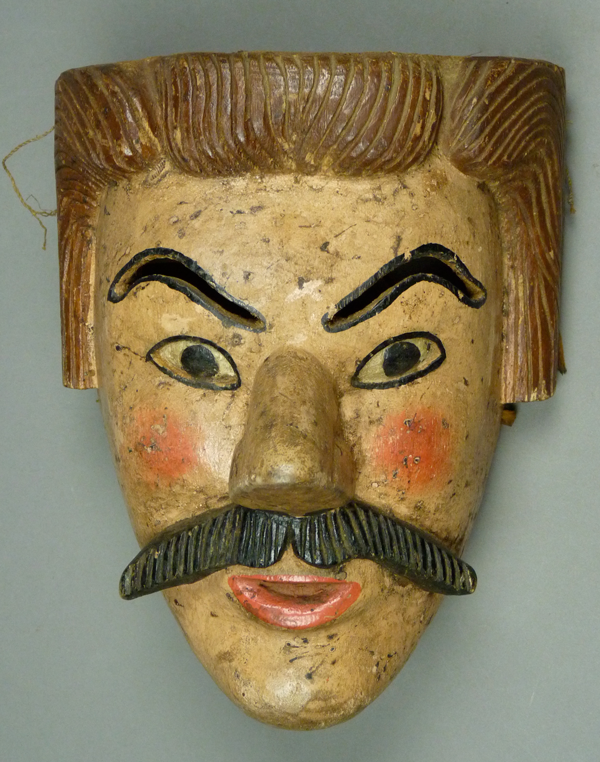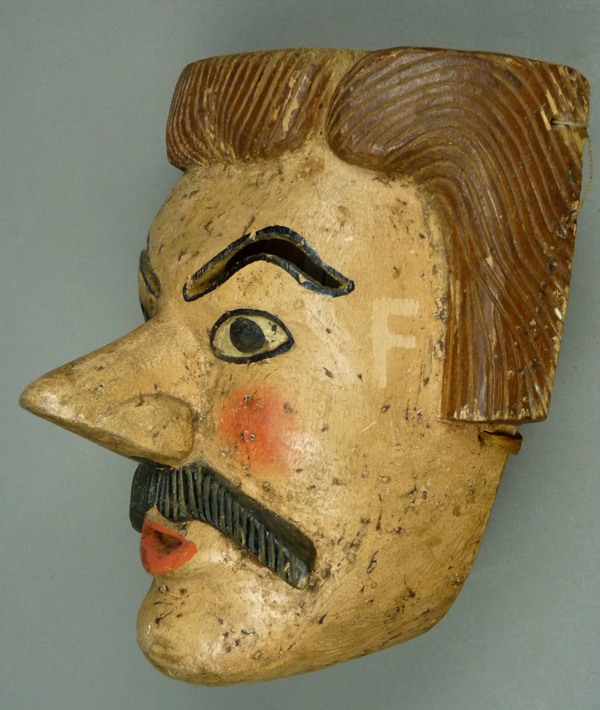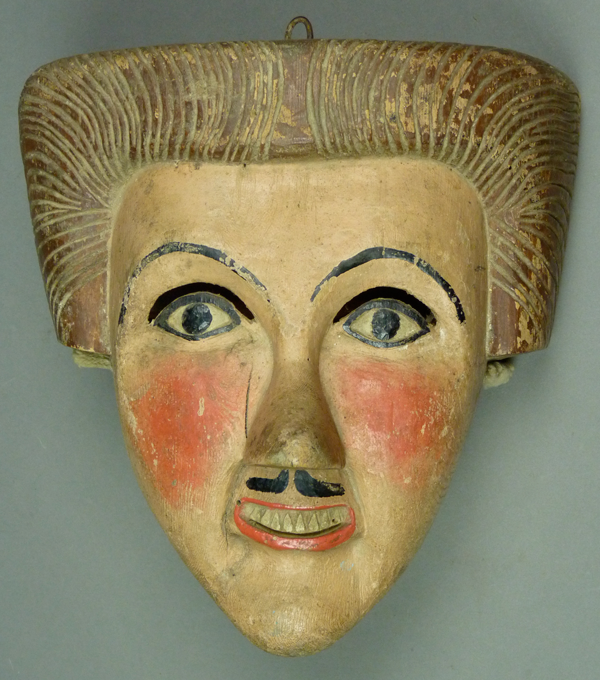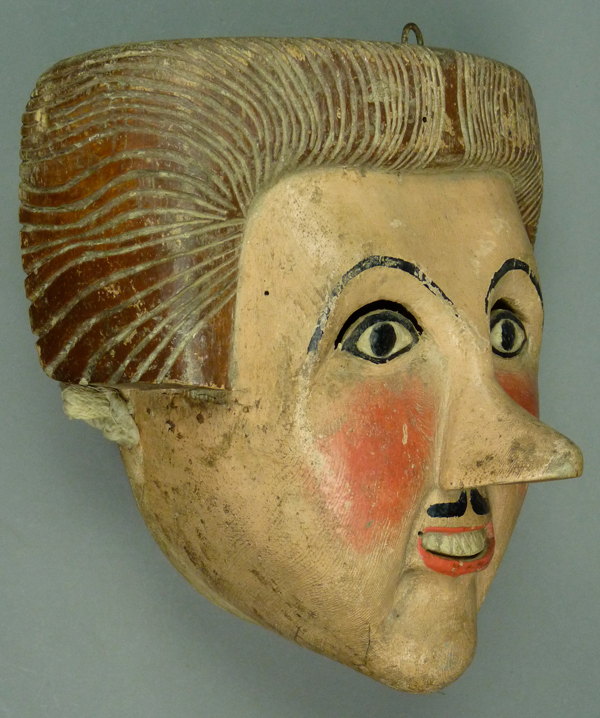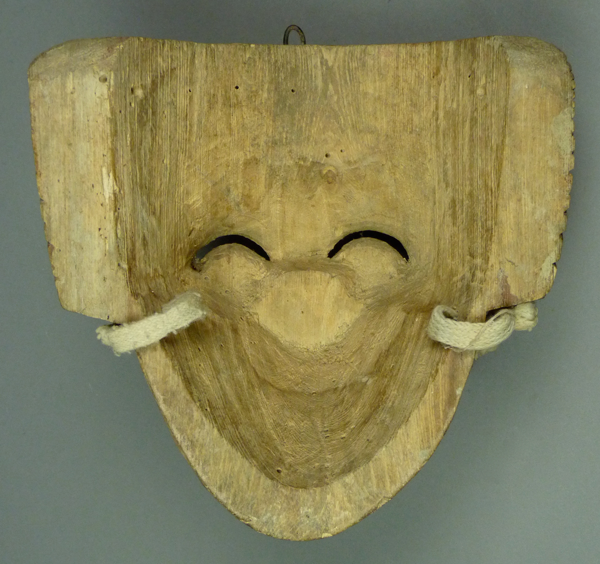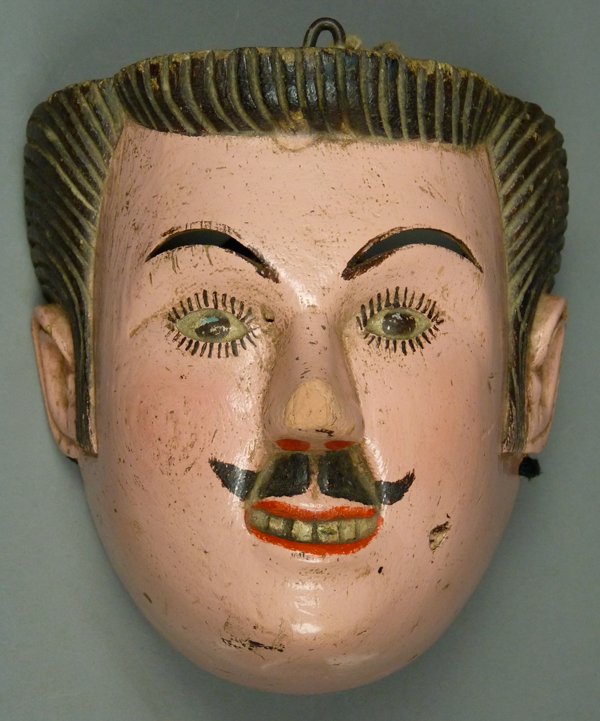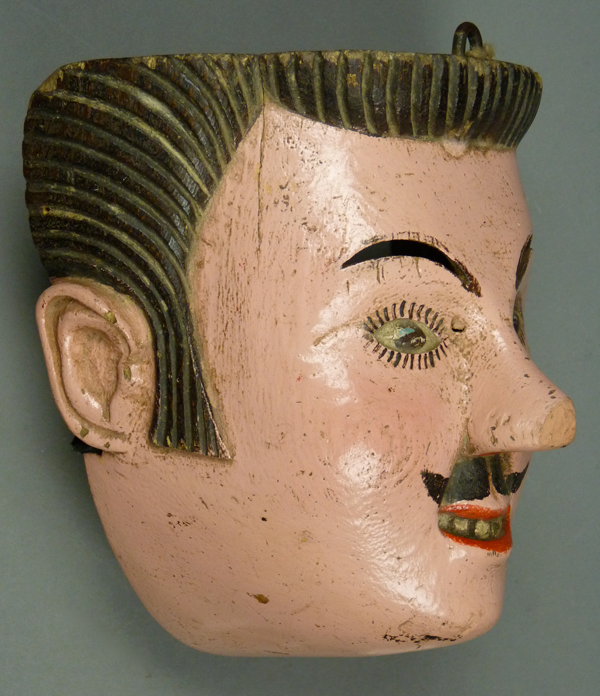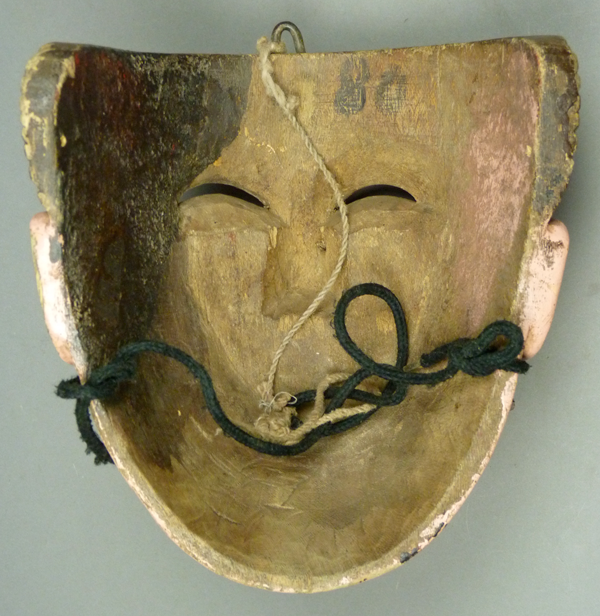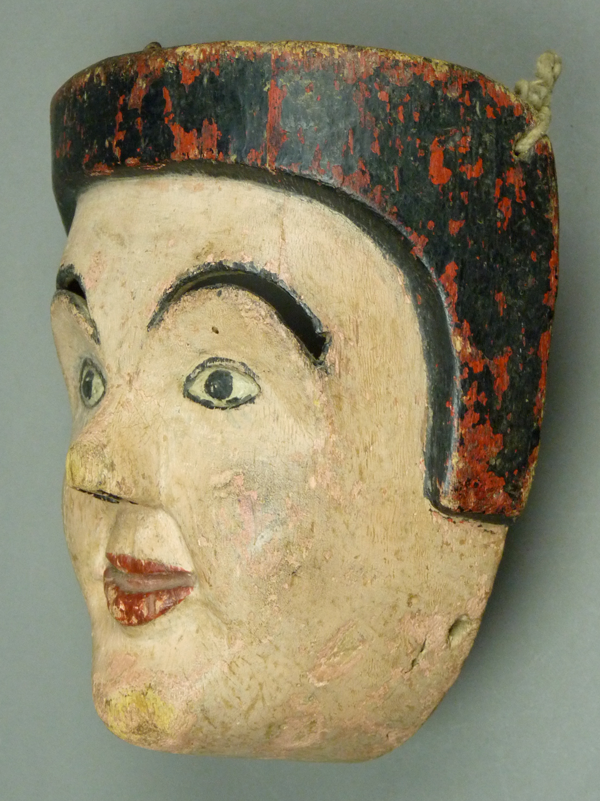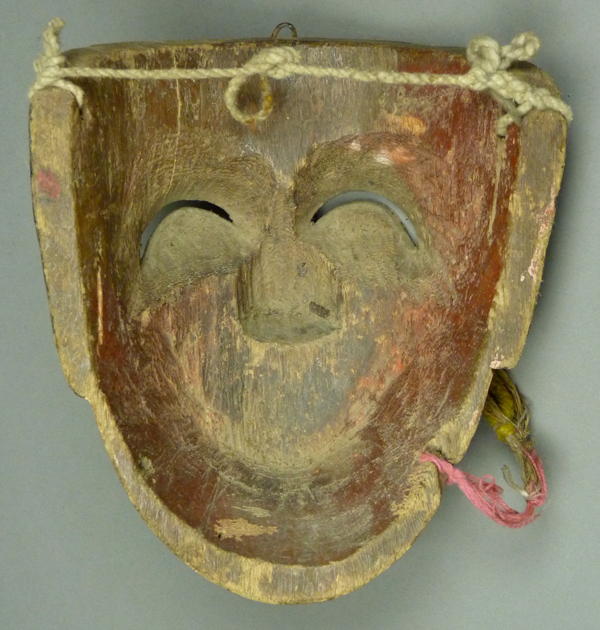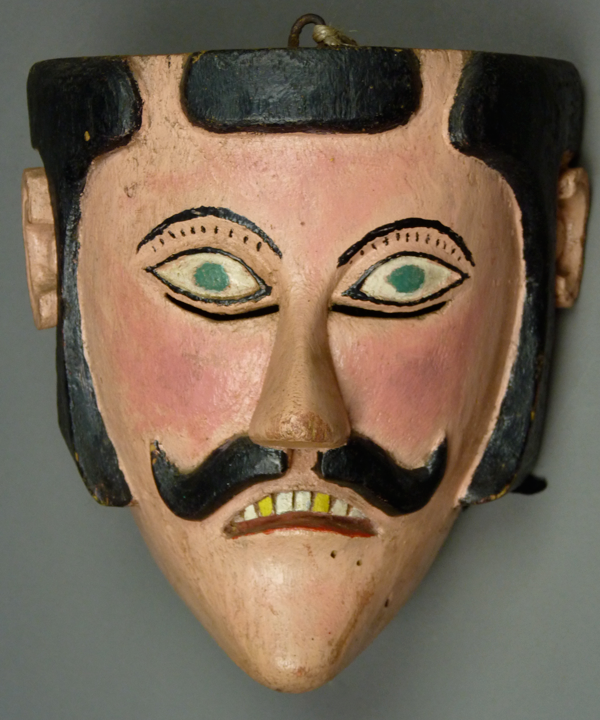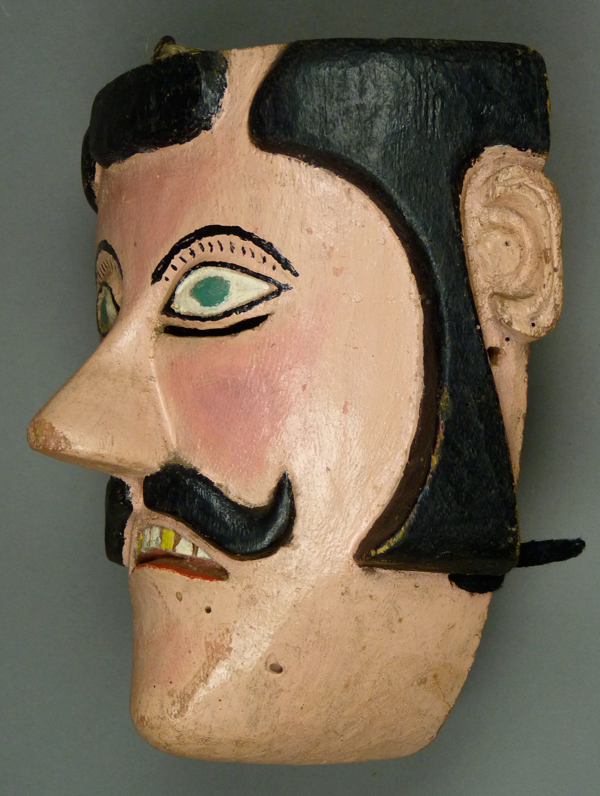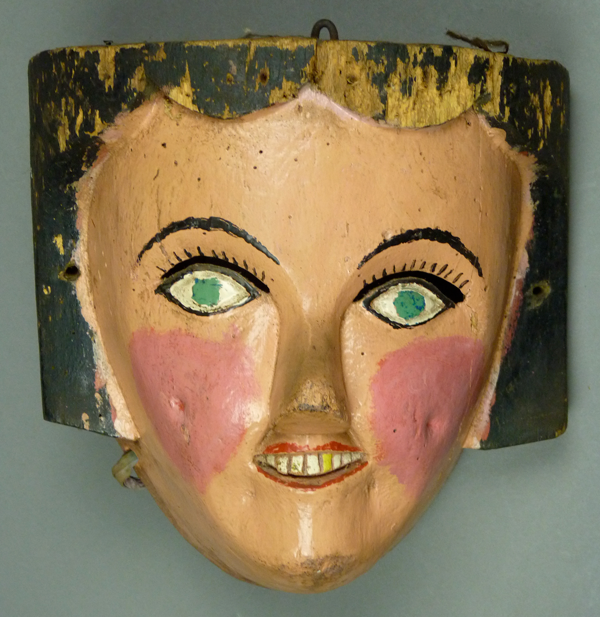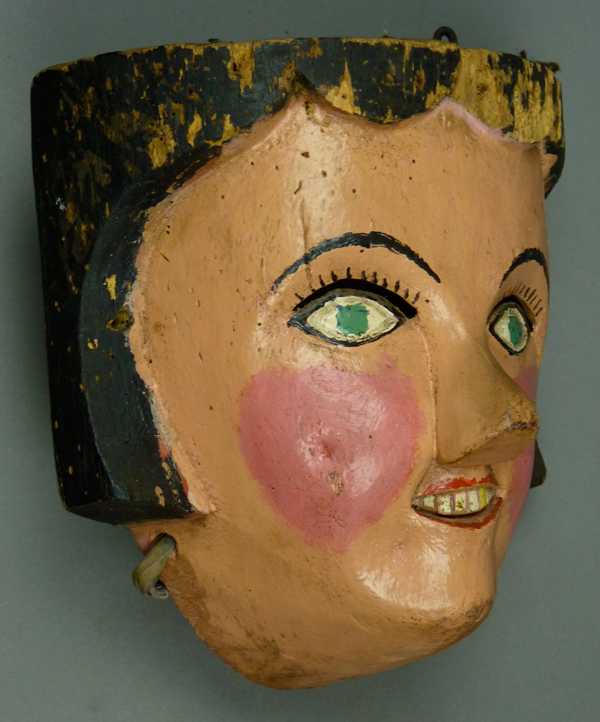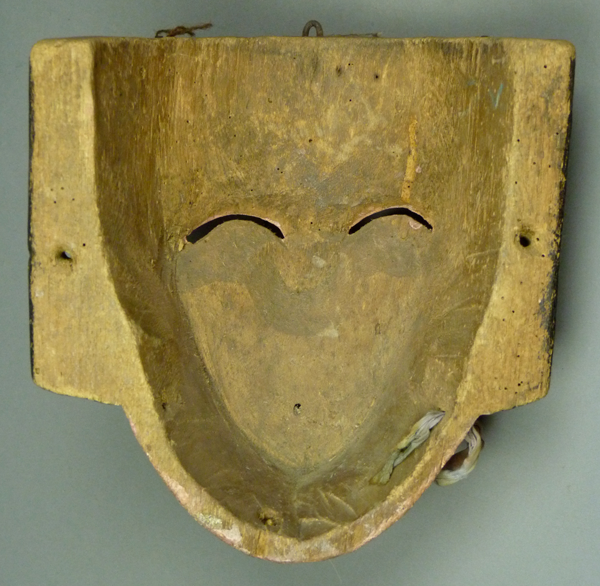Having introduced you to Mojíca masks in my discussion of the Urmston Collection, I decided to do further posts on those masks, drawing on my collection (none of the masks in today’s post are for sale).
I will start with a pair of Mojíca masks that I bought from René Bustamante in 1993. They were said to be from Bolaños, Veracruz, a place that I have been unable to locate. Based on their style, I feel confident that they are from Veracruz. According to René, the first represents Hernán Cortez and the second is his consort, Malinche. Here is the male mask—Hernán Cortéz.
This mask has a number of notable features, including the hairline in high relief, the vision slits within the eyebrows, and the elegant mustache.
From the side, one sees this long pointed nose. The letter F is painted on his left cheek, for some unknown reason. The mask is 8 inches tall, 7 inches wide, and 5 inches deep.
On front and back, this mask has numerous areas of staining that probably resulted from a swarm of insects taking up residence in and around the mask while it was stored in the house rafters.
And here is Malinche. This female mask has a painted on mustache, as did one of the Mojíca masks in a recent Urmston post. She wears this mustache as a mark of disrespect, because Malinche is viewed as having betrayed the Indians of Mexico by aiding Cortéz. Note how these are a matching pair, with the same hair and the same long pointed noses. But Malinche has other design details that are characteristic of the Mojíca masks, such as her small, carefully detailed teeth. It is a strange and comic thing about this pair that although each has brown hair, their mustaches are painted black. Almost all Mojíca masks have a metal staple at the top instead of a hole through the forehead. I suppose that this reflects the emphasis on carefully stylized hair for these masks.
The side view reveals the long pointed nose, which matches that of Cortéz. On the other hand the vision slits have been handled in a more conventional fashion.
The mask is 7¾ inches tall, 8 inches wide, and 4¾ inches deep.
The contour of the backs of this pair is typical. As will be evident, almost all Mojíca masks have this back design.
What is a Mojíca? Little is available about this name on the internet or in many standard books. In Máscaras (1981), Jaled Muyaes and Estaela Ogazón simply state that Mojícas dance during Carnaval in Tempoal, Veracruz. However, there is more information in a book about the masks in the collection of Rafael Coronel—La Tierra y El Paraíso—masks that are in the Rafael Coronel Museum in Zacatecas, in the state of Zacatecas, Mexico. In that collection there are at least five female Mojíca masks. In the description of Mask #129, on page 161, one learns that Mojíca is short for “Mojiganga,” a word that refers to masquerade, mummery, and clowning. The caption goes on to state that the Mojíca character pretends to engage in amorous and sexual behaviors and carries a doll that represents her infant son. In other words, the Mojícas are examples of generic Mexican dance characters that are called “Feos” (uglies). Feos demonstrate ugly, inappropriate, and otherwise forbidden behaviors in the context of Mardi Gras, where such depictions are the norm. We saw such behaviors in the video from Guerrero by female characters in the Manueles dance (at 3:40 minutes).
https://www.youtube.com/watch?v=kcfeVsNiv8U
As we have seen, the Mojíca female characters can dance opposite a partner with a male mask who may represent Cortéz. Here is a link to a video of Mojigangas in Tomatlán in the state of Veracruz. What one sees are very modern masks of male and female characters; the female masks are nothing like the wonderful older ones from the mid to late twentieth century that we will look at in today’s post.
https://www.youtube.com/watch?v=UPqS_GIfZDc
I have looked in vain for videos that show older style masks dancing.
Here is another old pair of masks from this tradition. Each has the forehead staple, the carefully carved hair, the vision slits concealed in the eyebrows, and this Cortéz has the same little teeth that are usual on the female Mojíca masks
The carving of the hair is exquisite from this angle. The ears are equally well carved.
The mask is 7¾ inches tall, 7 inches wide, and 4½ inches deep.
Note again the typical back design.
The Mojíca of this pair is unusually stately and beautiful. She resembles Lady Mary in the Downtown Abbey™ series.
She too has the forehead staple and the vision slits concealed in the brows. At one time she apparently had red hair.
The mask is 7½ inches tall, 6½ inches wide, and 3¼ inches deep.
The back was painted, and one sees evidence of considerable use by the wearing of the painted surface.
I have one more Mojíca pair to show you today. I bought this pair from Robin and Barbara Cleaver in 1987 and these two were my introduction to Mojíca masks. They were said to be from El Vada, Veracruz.
The teeth that that are painted yellow are meant to depict gold teeth.
The mask is 7½ inches tall, 7 inches wide, and 4 inches deep.
The back shows staining from moderate use.
The female mask shows evidence of mild infestation with wood boring insects.
A number of these Mojíca masks have turned up noses.
The mask is 7½ inches tall, 7½ inches wide, and 3½ inches deep.
This back also demonstrates significant wear.
Next week I will continue this discussion of Mojíca masks with some single Mojicas.

